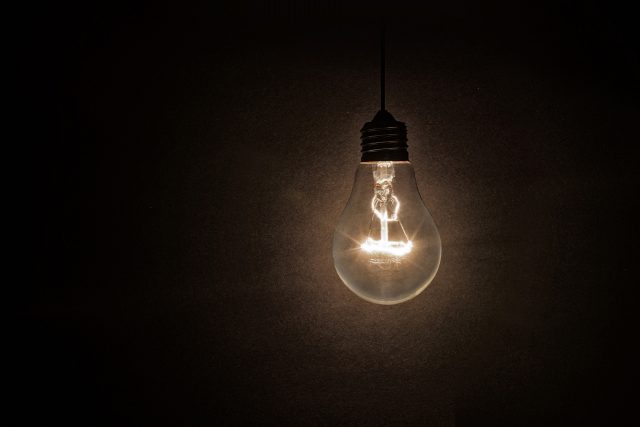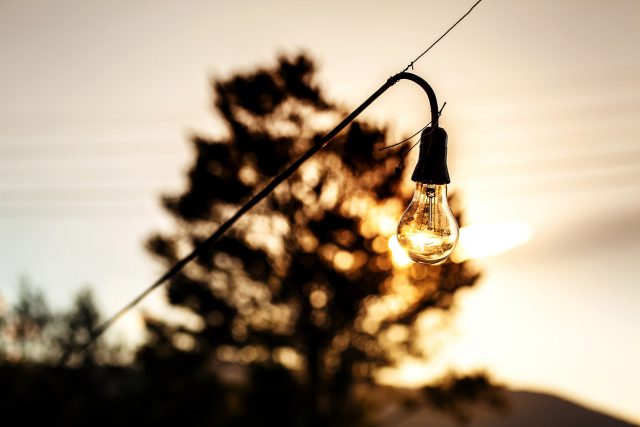As a crowd gathered in Edison’s Menlo Park, New Jersey to usher in the New Year, they witnessed a historic change. Artificial light.
And since 1879, we’ve been on a fast track to light up the whole world. Which is great for us. We get to read in bed until the wee hours of the morning. With the flip of a switch we can find out where in the world we misplaced our lip balm. It’s great!
But it turns out it’s only really great for us. Sadly, our pollinators are suffering for our convenience.
While the beloved bee might be the first kind of creature that comes to mind when you think of pollination, there are many more that get to work when the sun goes down, like moths and beetles.
The Dark Side of Artificial Light

Unfortunately, artificial light can confuse these important pollinators and make it nearly impossible for them to decipher between natural light and artificial light. The Institute of Ecology and Evolution at the University of Bern found that meadows with artificial light are visited by nocturnal pollinators two-thirds less often than areas without artificial light. They studied a relatively dark meadow with no artificial lights and found 300 insect species pollinating flowers. Sadly, on meadows with artificial lights, flowers were visited 62 per cent less.
Why is that? The pollinators are so confused by the artificial light that they are flying towards these lights and exhausting themselves instead of pollinating the flowers.
Artificial light is so confusing to nocturnal pollinators that it can actually fragment insect populations and can even disrupt the circadian rhythm of plants.
And before you ask bees to step up and pick up the slack, they’re feeling the pain of artificial lights too. When diurnal pollinators are exposed to artificial lights at night, it can actually mess up their day and night cycles, which in turn can affect their reproductivity.
Unfortunately, the growth of artificial light the world over is growing at a rate of six per cent a year. Something has to be done.
What’s the answer?

The likelihood of the world being ushered into darkness again is next to nil, but there are things we can do to help our pollinator friends.
- Do buy adjustable outdoor lights. While LEDs are fantastic for the environment, they have higher levels of blue light that insects are drawn to. Alter that colour to a warmer light.
- Don’t add lights to your garden – especially if you want your flowers to be pollinated over night!
- Do choose lights that shine down. When lights shoot up into the sky, it can draw more and more nocturnal insects and stop them from pollinating.
- Do keep light limited. You don’t really need your outdoor lights on from sundown to sunrise, do you? Opt for lights on a timer or turn your lights off when you’re not using them.





2 comments
I am upset by the noticeable decline in butterflies and bees in our backyard. I live in a residential city neighbourhood, with a small back yard, in which we have mostly wildflowers that attract butterflies and ground cover. , We use NO fertilizers or chemicals of any kind, There are some surveillance lights on the house next door. One is visible from my back yard and I hope that it doesn’t harm the night pollinators. I’m letting a tree grow tall to block the light as much as I can.
Can you buy a bee’ house’ anywhere. One that gives bees a safe place. I’m not sure I want to erect a bee hive because that means that I have to collect the honey, and I’m not sure I want to do that. I’d appreciate any helpful comments about this. Thanks. Ann
Hi Ann, growing wildflowers and being organic is so important – good for you! As to nesting, if you wish to supplement bee habitat with a bee house, consider getting one on the small side as larger ones can be a big attractor to parasitic species and some non-native ones also. But allowing your garden to have natural spots for nesting, for all your native bees who have different nesting needs (Canada has about 900 species!), is often the easiest way and there is no responsibility in maintaining a house over the years. This means having some open ground for ground nesting bees, little crevices for the cavity nesters and even an old tree stump or log as well as leaving some hollow plant stems left upright. It sounds like you don’t want a Honey Bee hive but as you mentioned it I wanted to point out that Honey Bees are not native and it is not the same as supporting our native bees. We will soon have a large section on bees and their different needs on our website but in the meantime, here are some links that you may enjoy from CWF and a couple of groups that also do good work:
https://blog.cwf-fcf.org/index.php/en/how-to-tell-if-a-plant-is-wildlife-friendly/
https://cwf-fcf.org/en/resources/downloads/booklets-handouts/factsheet_pollinators_en.pdf
https://cwf-fcf.org/en/resources/downloads/booklets-handouts/polle.pdf
https://cwf-fcf.org/en/resources/downloads/booklets-handouts/gardening-for-butterflies_resource.html
https://cornerpollinatorgarden.net/and-for-cavity-nesting-bees/
https://ofnc.ca/fletcher-wildlife-garden/bee-boxes-houses-condos-and-hotels